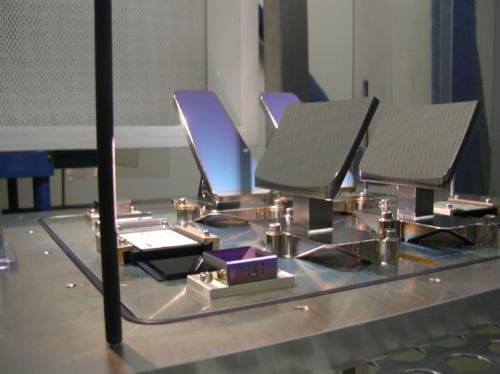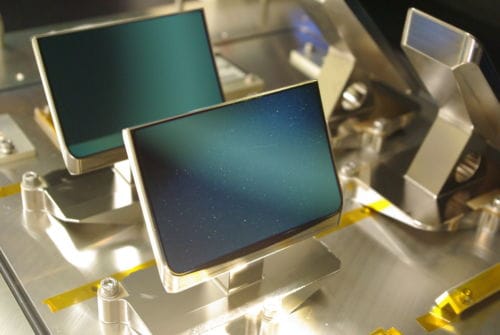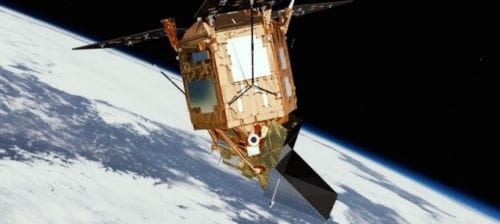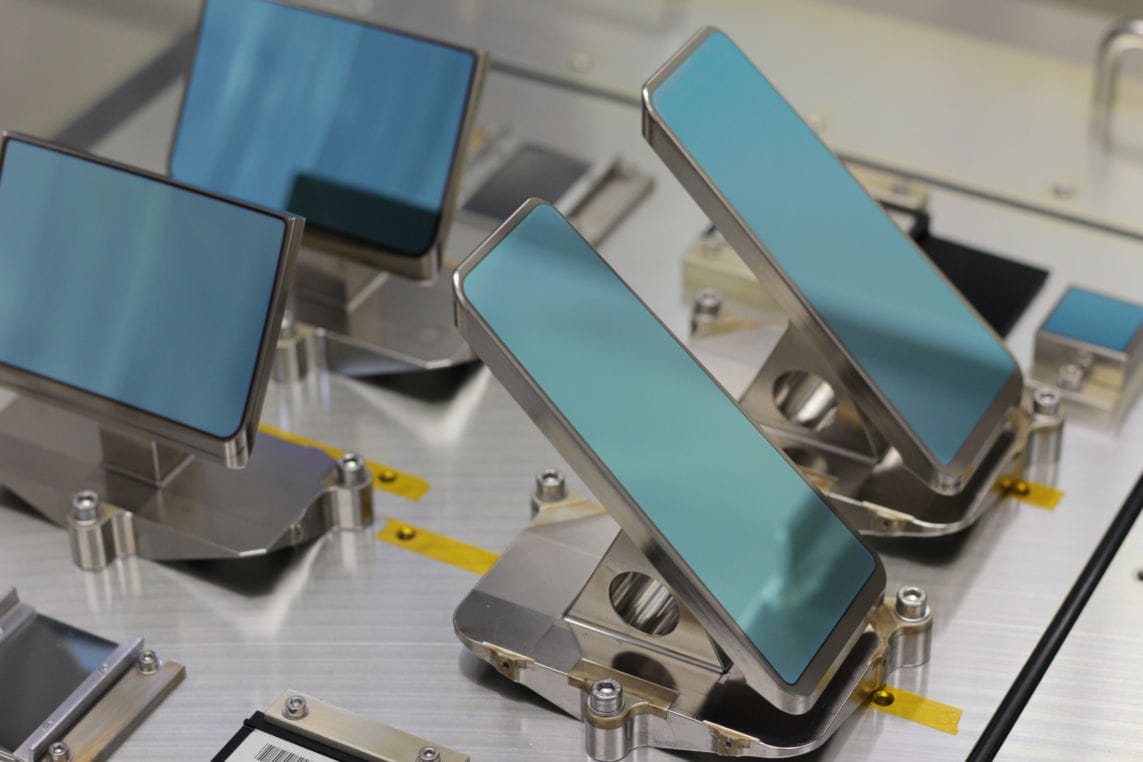Air pollution, climate change, and depletion of the ozone layer are all caused by changes in atmospheric composition, mainly due to human activities.
Understanding them requires measuring the composition of the atmosphere in great detail, from its major constituents down to trace gases. This will be the role of TROPOMI, the TROPOspheric Monitoring Instrument, that will be launched on-board the ESA Sentinel-5P satellite on October 13th from the Plesetsk Cosmodrome in Russia.
TROPOMI is based on spectrometers that will measure how the sun light is absorbed by the atmosphere, providing scientists with detailed information on the composition of the air we breathe. At the heart of this optical instrument are several sets of mirrors that transport the light coming from the atmosphere to the camera detectors.
AMOS delivered the mirrors for the UVIS and the SWIR spectrometers. These mirrors were machined from solid blocks of aluminum such that each mirror and its support form one single component, stable and easy to align. The mirrors were then coated and finally polished to reach a precision better than one-thousandth of the thickness of a human hair! This is mandatory, because any deviation from the ideal shape would mean that the measurement accuracy as well as precious information would be lost.
Philippe Gilson, the CEO of AMOS, stated: “In total, AMOS delivered 24 high-quality mirrors to TNO for TROPOMI. The customer was so pleased with the quality of the work performed by our teams that he recently decided to place a new contract with AMOS for the 3 follow-up Sentinel 5 missions. These mirrors are already being manufactured in our workshop near Liège in view of the first Sentinel-5 launch planned for 2021.”
The TROPOMI daily global observations will be used for improving air quality forecasts as well as for monitoring the concentrations of atmospheric constituents. They will also contribute to services such as volcanic ash surveillance for aviation safety, warnings for high UV radiation levels that can cause skin cancer, and improved weather forecasts.
Additional Link:
https://www.esa.int/Our_Activities/Observing_the_Earth/Copernicus/Sentinel-5P



 info@amos.be
info@amos.be
 +32 4 361 40 40
+32 4 361 40 40


 see all
News
see all
News